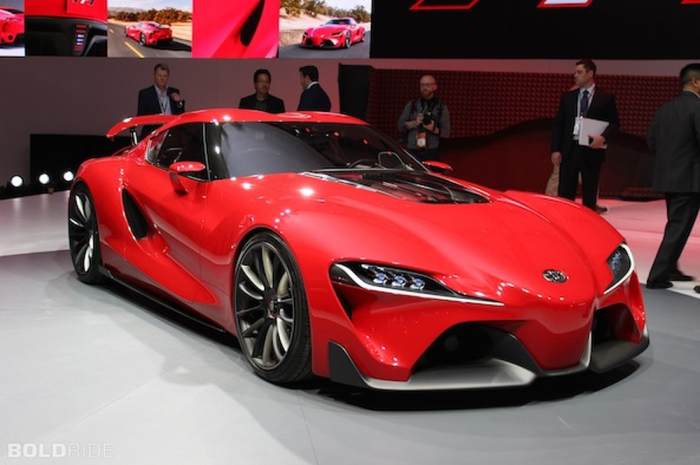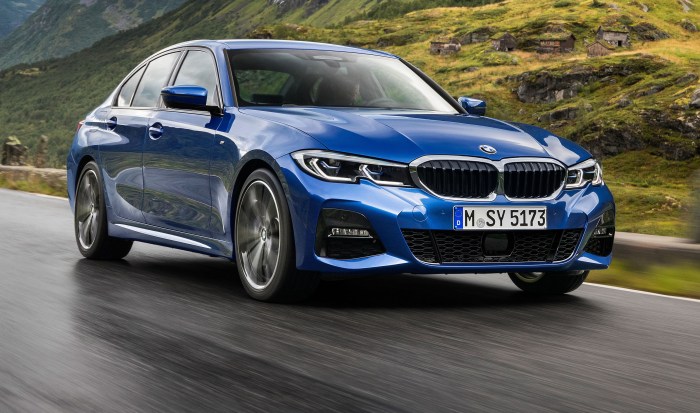All New Car 2019 Price Guide
2019 New Car Prices: A Comprehensive Overview: All New Car 2019 Price

Source: autotrader.com
All new car 2019 price – The year 2019 presented a diverse landscape in the new car market, with fluctuating prices influenced by a variety of economic and technological factors. This overview analyzes price trends, popular models, influential factors, financing options, and illustrative examples to provide a comprehensive understanding of the 2019 new car market.
Price Trends for New Cars in 2019, All new car 2019 price

Source: newcarreleasedates.com
Understanding all new car 2019 prices requires considering various factors, including model and features. To get a sense of historical pricing trends, you might find it useful to compare these figures to data from previous years; for example, check out this resource on 2017 new car price in uae to see how prices have potentially shifted. This historical context can help you better evaluate the current market for all new car 2019 prices.
Analyzing the average prices of new cars across different segments in 2019 reveals interesting trends. The following table provides a snapshot of average prices, price ranges, and notable models for various segments.
| Segment | Average Price (USD) | Price Range (USD) | Notable Models |
|---|---|---|---|
| Sedan | $25,000 | $18,000 – $40,000 | Honda Civic, Toyota Camry, Hyundai Sonata |
| SUV | $32,000 | $22,000 – $60,000 | Honda CR-V, Toyota RAV4, Ford Escape |
| Truck | $40,000 | $28,000 – $70,000 | Ford F-150, Chevrolet Silverado, Ram 1500 |
A comparison of average new car prices across 2018, 2019, and 2020 reveals the following:
- Average prices increased slightly from 2018 to 2019, reflecting general market trends and increasing manufacturing costs.
- The increase was more pronounced in the SUV and Truck segments due to higher demand and the introduction of more technologically advanced models.
- Prices continued to rise from 2019 to 2020, though the rate of increase varied by segment.
Three key factors influenced new car prices in 2019: increased material costs, technological advancements, and fluctuating economic conditions. Rising steel and aluminum prices directly impacted manufacturing costs. The incorporation of advanced safety features and infotainment systems increased vehicle complexity and thus price. Finally, economic factors like interest rates and consumer confidence played a role in overall demand and pricing.
Popular Car Models and Their Prices in 2019
The following table lists ten of the most popular new car models in 2019, along with their manufacturers and starting prices. Note that these prices are approximate and may vary based on trim level and options.
| Rank | Model | Manufacturer | Starting Price (USD) |
|---|---|---|---|
| 1 | Toyota RAV4 | Toyota | $26,000 |
| 2 | Honda Civic | Honda | $20,000 |
| 3 | Ford F-150 | Ford | $30,000 |
| 4 | Toyota Camry | Toyota | $25,000 |
| 5 | Honda CR-V | Honda | $27,000 |
| 6 | Chevrolet Silverado | Chevrolet | $33,000 |
| 7 | Ram 1500 | Ram | $34,000 |
| 8 | Nissan Altima | Nissan | $24,000 |
| 9 | Hyundai Sonata | Hyundai | $23,000 |
| 10 | Jeep Grand Cherokee | Jeep | $35,000 |
Price variations between trim levels for three popular models are as follows:
- Toyota RAV4: The base model started around $26,000, while higher trims with features like all-wheel drive and advanced safety packages could exceed $35,000.
- Honda Civic: The starting price for the base Civic was approximately $20,000. Higher trims offered sportier designs, more advanced technology, and better fuel economy, pushing prices closer to $30,000.
- Ford F-150: The base model started around $30,000, but higher trims with upgraded engines, off-road packages, and luxury interiors could easily reach $60,000 or more.
A comparison of prices for the Toyota RAV4, Honda Civic, and Ford F-150 across dealerships in a major metropolitan area (e.g., New York City) would show variations. A bar chart illustrating this would show varying heights for each model across different dealerships, reflecting competitive pricing strategies and inventory levels. Dealerships with higher inventory might offer slightly lower prices, while those with lower stock might command higher prices.
Factors Affecting 2019 New Car Prices
Several factors significantly impacted new car prices in 2019. This section explores the influence of fuel efficiency standards, technological advancements, and economic conditions.
Fuel efficiency standards, while promoting environmental responsibility, added to manufacturing costs. Meeting stricter standards often requires the use of lighter materials, more efficient engines, and advanced technologies, all contributing to higher vehicle prices. For example, the increased use of aluminum in vehicle bodies, while improving fuel economy, also added to the overall cost of production.
Technological advancements, such as advanced driver-assistance systems (ADAS), sophisticated infotainment systems, and enhanced safety features, substantially increased the cost of new vehicles. Features like automatic emergency braking, lane departure warning, and adaptive cruise control, while enhancing safety, require complex sensor systems and software integration, leading to higher prices. Similarly, larger touchscreens, advanced connectivity features, and premium sound systems added to the overall cost of manufacturing.
Economic conditions, such as interest rates and inflation, directly influenced the affordability of new cars. Lower interest rates generally make financing more accessible, stimulating demand and potentially driving up prices. Conversely, high inflation rates increase the cost of raw materials and manufacturing, directly impacting the final price of vehicles. The interplay of these factors created a dynamic market where pricing was influenced by both supply and demand.
Financing and Purchasing Options for New Cars in 2019

Source: imgix.net
Understanding financing and purchasing options is crucial for making informed decisions. This section Artikels typical loan terms, leasing options, and the impact of down payments.
Typical loan terms for new car financing in 2019 ranged from 36 to 72 months, with interest rates varying based on credit score and market conditions. Interest rates generally ranged from 3% to 8%, but could be higher for individuals with lower credit scores. Longer loan terms resulted in lower monthly payments but increased the total interest paid over the life of the loan.
Common leasing options included lease terms of 24, 36, or 48 months. Monthly lease payments typically included a money factor (similar to an interest rate), a capitalized cost (the vehicle’s price), and a residual value (the vehicle’s value at the end of the lease). Lease payments were generally lower than loan payments for the same vehicle, but they did not result in vehicle ownership.
- 24-month lease: Typically higher monthly payments, lower total cost.
- 36-month lease: A balance between monthly payment and total cost.
- 48-month lease: Lower monthly payments, higher total cost.
The down payment amount significantly affected the total cost of a new car purchase. A larger down payment reduced the loan amount, leading to lower monthly payments and overall interest paid. For example, a $10,000 down payment on a $30,000 vehicle resulted in a smaller loan amount compared to a $5,000 down payment, leading to significant savings in interest over the life of the loan.
Illustrative Examples of 2019 New Car Prices
This section provides detailed examples of 2019 new car models from different segments to illustrate price variations and value propositions.
Example 1: Honda Civic (Compact Car): A base model 2019 Honda Civic started around $20,000, offering good fuel economy and reliable performance. Features included a basic infotainment system, standard safety features, and a comfortable interior. Higher trims added features like a sunroof, upgraded audio system, and advanced safety technologies, increasing the price to around $25,000.
Example 2: Toyota RAV4 (Mid-size SUV): The base 2019 Toyota RAV4 started around $26,000, offering practicality and fuel efficiency. Features included a spacious interior, standard safety features, and a user-friendly infotainment system. Higher trims added all-wheel drive, advanced safety technologies, and premium features, increasing the price to over $35,000.
Example 3: Ford F-150 (Pickup Truck): A base 2019 Ford F-150 started around $30,000, providing robust towing and hauling capabilities. Features included a powerful engine, durable construction, and a basic interior. Higher trims added features like upgraded engines, luxury interiors, advanced technology, and off-road packages, driving the price up to $60,000 or more.
Comparing the price-to-feature ratio of a 2019 Honda Civic and a similarly sized and equipped Hyundai Elantra would reveal differences. While both offered comparable features, variations in pricing could be attributed to brand reputation, marketing, and technological differentiators. A detailed comparison considering specific features and pricing for each trim level would determine which model offers better value.
Optional packages and add-ons significantly impacted the final price. For example, adding a premium sound system, sunroof, or navigation package to a base model 2019 Toyota RAV4 could easily increase the price by $2,000 to $4,000, depending on the specific package and options selected.
Clarifying Questions
What were the most significant factors influencing used car prices in 2019?
Used car prices in 2019 were largely influenced by the supply and demand dynamics created by the new car market. A shortage of new vehicles due to various factors could drive up used car prices. Economic conditions and consumer confidence also played a role.
Were there any significant recalls affecting 2019 car models?
To determine specific recalls, you would need to consult the National Highway Traffic Safety Administration (NHTSA) website or the manufacturer’s website for the specific 2019 model you are interested in. Recalls vary by make and model.
How did the trade-in value of a 2018 car affect the purchase price of a 2019 car?
The trade-in value of a 2018 car could significantly reduce the out-of-pocket cost of purchasing a 2019 model. Dealerships often offer trade-in appraisals, and the value depends on the condition, mileage, and demand for the 2018 vehicle.





















